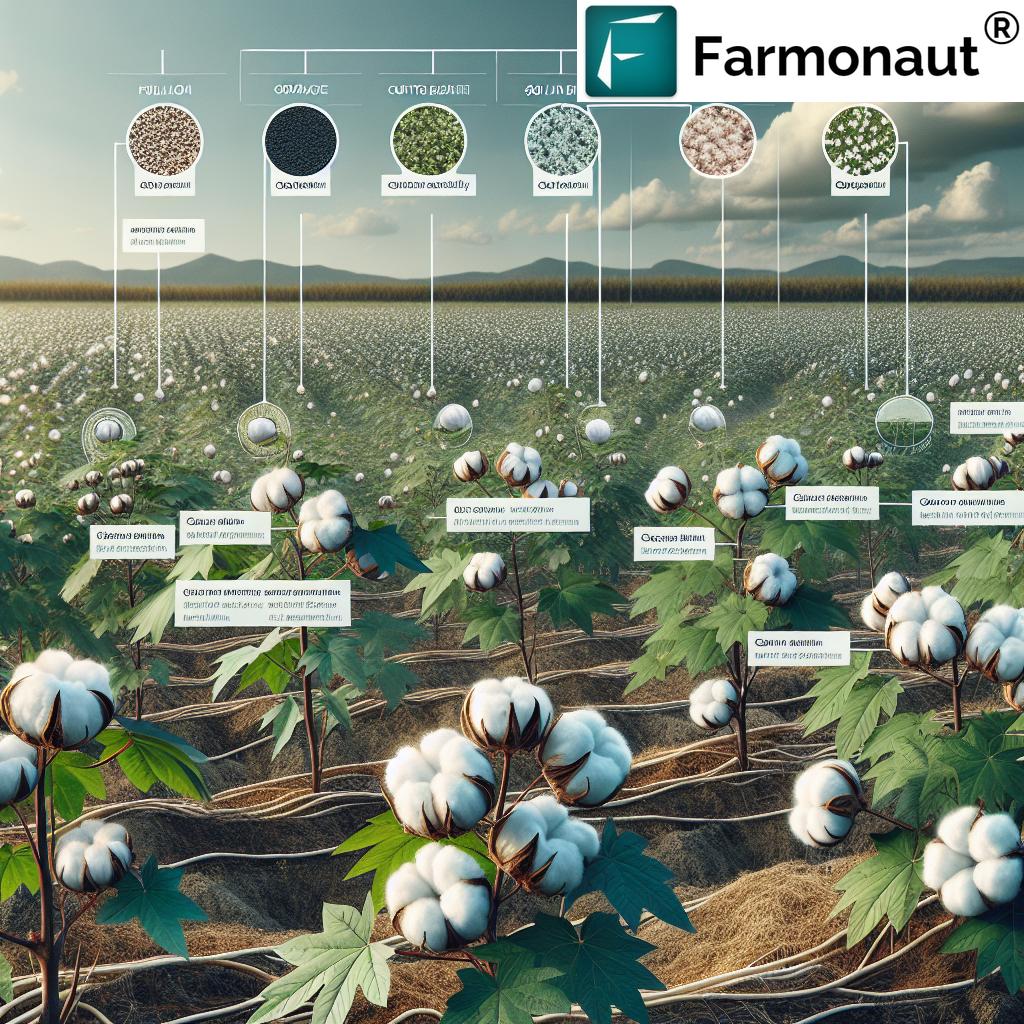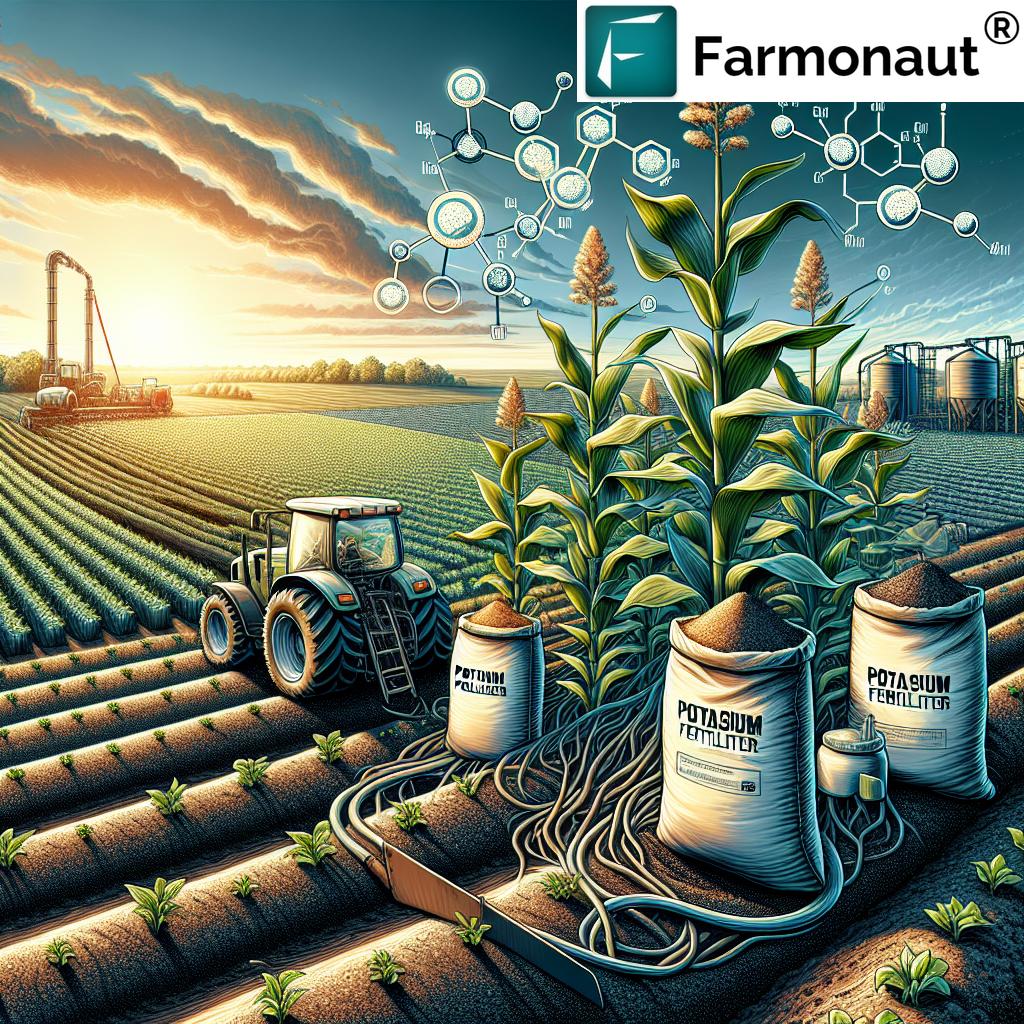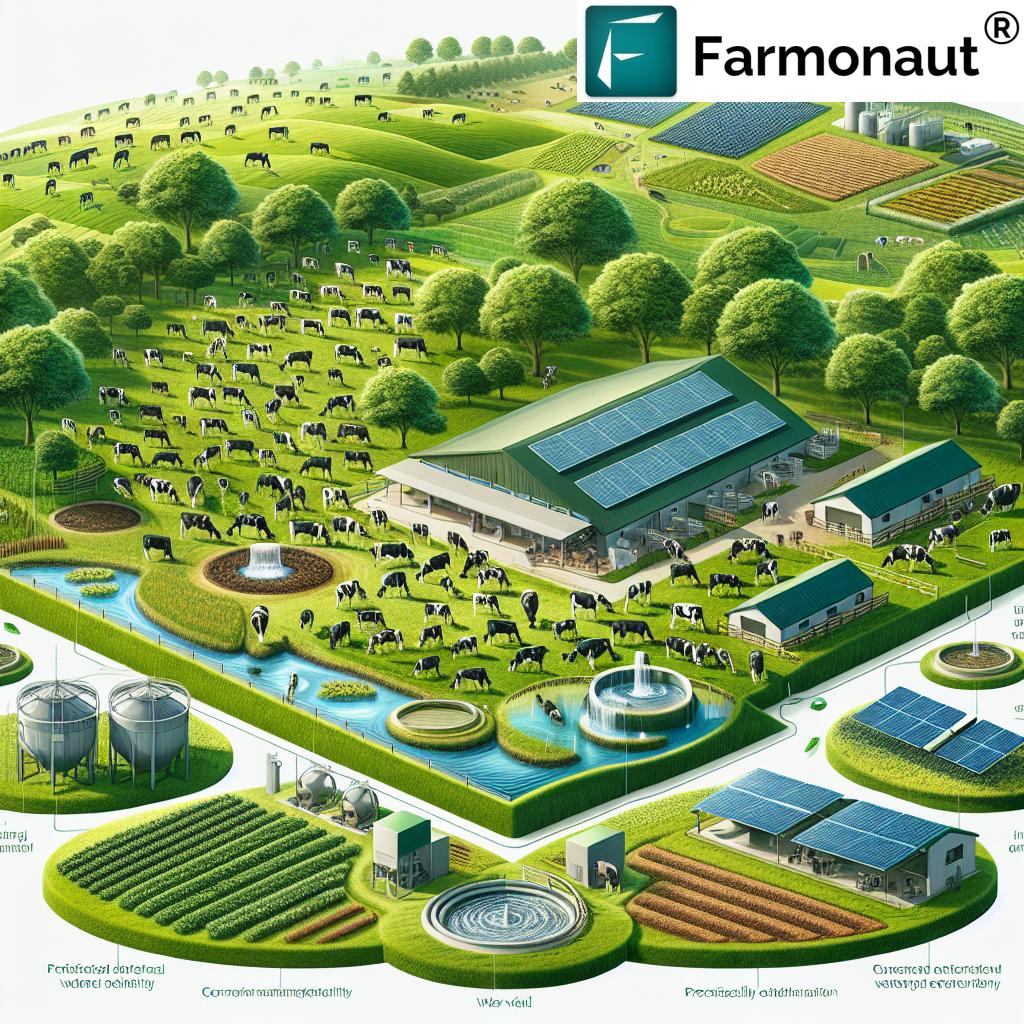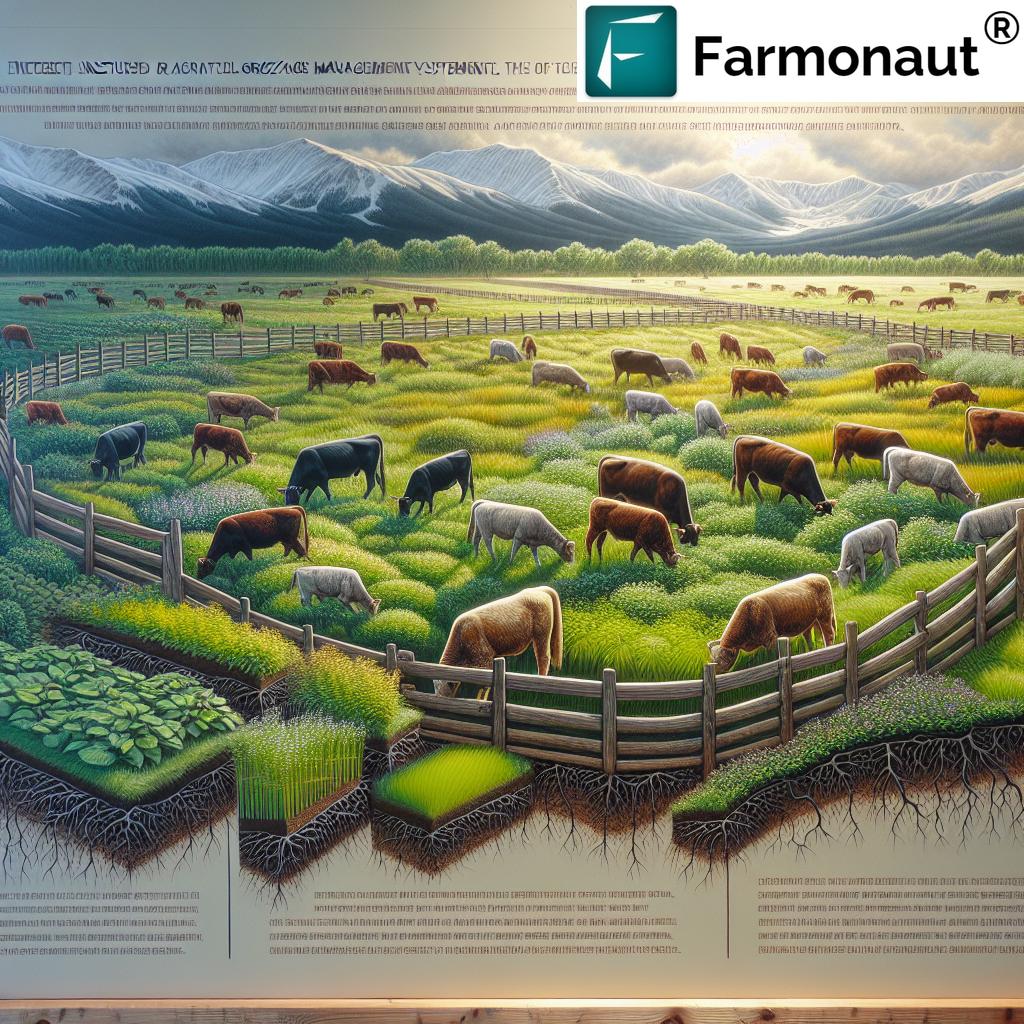Sustainable and Regenerative Farming: 7 Key Practices for Soil Health, Carbon Sequestration & Climate Resilience
Table of Contents
- Introduction: The 2025 Agricultural Juncture
- Trivia
- What is Sustainable and Regenerative Farming?
- Why Soil Health Is Critical in Agriculture
- Sustainable and Regenerative Farming: 7 Key Practices
- Comparative Impact Table
- Farmonaut: Empowering Regenerative Agriculture with Satellite Technology
- Key Challenges and Opportunities in Advancing Regenerative Soil Farming
- FAQ – Sustainable and Regenerative Farming
- Conclusion: A Resilient and Regenerative Future
Introduction: The 2025 Agricultural Juncture
In 2025, our global agricultural landscape stands at a critical juncture. With escalating climate challenges, declining soil health, and increasing demands for food production, the world is seeking urgent and holistic solutions. Sustainable and regenerative farming practices have quickly emerged as vital solutions for ensuring food security and preserving the planet—a dual goal for survival and prosperity.
Among the various contexts where sustainability is discussed, regenerative soil farming provides the most comprehensive lens to understand and advance these practices today. Unlike conventional farming that often depletes soil nutrients through heavy reliance on synthetic inputs and chemical fertilizers or pesticides, regenerative farming and organic sustainable regenerative farming actively restore soil health, enhance biodiversity, sequester carbon, and improve ecosystem resilience.
In this comprehensive guide, we’ll explore the 7 key sustainable and regenerative farming practices, their impact on soil health, carbon sequestration, and the future of climate-smart agriculture. We’ll also discuss how pioneers like Farmonaut are using cutting-edge satellite technology to empower farmers in monitoring, optimizing, and scaling these ecological solutions globally.
What is Sustainable and Regenerative Farming?
Sustainable and regenerative farming refers to a group of agricultural practices aimed at maintaining— and even improving— the soil and ecosystem health over the long term. While sustainable agriculture seeks to limit damage, regenerative soil farming goes a step further. It focuses on actively healing and improving soils, cycling more nutrients, enhancing biodiversity, and sequestering atmospheric carbon dioxide.
The principles of organic sustainable regenerative farming align closely with certified organic agriculture, which prohibits synthetic fertilizers and pesticides, and supports natural biological processes. Through these regenerative farming practices, we build healthy, living soils, create resilient agricultural systems, and support more sustainable diets for communities worldwide.
At the core of regenerative soil farming are a diverse range of techniques, including cover cropping, reduced or no-till planting, managed crop rotations, agroforestry, composting, and integrating managed grazing livestock. Each of these approaches contributes to a more resilient ecosystem and addresses soil health, carbon sequestration, pest management, nutrient cycling, and climate adaptation.
Why Soil Health Is Critical in Agriculture
Soil health is the foundation of all agricultural production, food security, and climate resilience. Healthy soils possess a rich structure teeming with microbial communities, fungi, and organic matter that underpin all biological activity. When managed regeneratively, soils:
- Store more carbon: Acting as carbon reservoirs, healthy soils can draw down significant amounts of atmospheric CO2, mitigating climate change by sequestering greenhouse gases.
- Cycle nutrients efficiently: Living soils provide and recycle key nutrients to plants via powerful microbial networks—reducing dependency on external synthetic inputs.
- Increase water retention: Improved soil structure and organic matter enhance the soil’s capacity to hold water—crucial for resilience during droughts and unpredictable weather events.
- Prevent erosion & degradation: Cover from crops and organic matter shields the soil surface, reducing runoff and preserving the soil ecosystem.
- Support healthful, nutrient-dense crops: Regenerative practices lead to more resilient plants and nutritious food.
- Enhance biodiversity: Diverse cropping systems, agroforestry, and rotational grazing foster habitat for wildlife, insects, and beneficial soil organisms.
Sustainable and Regenerative Farming: 7 Key Practices
Let’s dive into the most impactful and widely adopted regenerative and sustainable farming techniques being advanced globally, with a focus on restoring, preserving, and building healthy soils in 2025 and beyond.
-
1. Cover Cropping
Cover cropping involves planting crops (like legumes, rye, or clover) during off-seasons or between food crops, instead of leaving soil bare. This key regenerative practice helps protect the soil surface, prevent erosion, increase organic matter, and inhibit weed growth.
- Environmental Benefit: Reduces erosion, builds soil organic matter, fixes nitrogen naturally, enhances soil fertility and microbial activity.
- Impacts: More resilient soil structure, carbon drawdown, improved water retention, and vibrant plant-biology cycling.
- Economic Benefit: Reduces need for synthetic fertilizers and controls weeds naturally, reducing inputs.
-
2. Crop Rotation
Crop rotation is the strategic sequencing of different crop families on the same field across seasons or years. Rotating crops breaks pest and disease cycles, enhances nutrient availability, and balances soil demands, preventing depletion.
- Environmental Benefit: Reduces disease and pest pressure, enhances biodiversity above and below ground.
- Impacts: Increases soil microbial diversity, improves nutrient cycling, prevents buildup of soil pathogens.
- Economic Benefit: Reduces dependency on pesticides and synthetic nutrients; over time, increases yields and farm resilience.
-
3. Reduced or No-Till Planting
Reduced tillage or no-till farming minimizes or avoids mechanical soil disturbance. It preserves soil structure, microbial communities, and organic matter, significantly reducing erosion, compaction, and fuel costs.
- Environmental Benefit: Protects soil, increases carbon capture, conserves moisture, and maintains a functioning soil ecosystem.
- Impacts: Healthier soils, increased organic matter, and lower greenhouse gas emissions.
-
4. Agroforestry
Agroforestry integrates trees and shrubs into croplands or pastures to mimic natural ecosystems. The shade provided, leaf litter, and root diversity offer habitat for beneficial insects and soil organisms, stabilize soils, and create additional carbon sinks.
- Environmental Benefit: Enhances biodiversity, increases soil organic matter, and sequesters more carbon above and below ground.
- Impacts: Greater ecosystem resilience and crop yields in challenging climates.
- Economic Benefit: Provides additional revenue streams (timber, fruit, medicinal plants) and supports sustainable diets.
-
5. Composting & Organic Amendments
Composting recycles organic matter (residues, manure, green waste) into valuable soil amendments rich in nutrients and microbes. Using compost and organic amendments increases soil fertility, improves structure, and boosts microbial activity—helping to regenerate the entire soil ecosystem.
- Environmental Benefit: Reduces waste, returns nutrients to the soil, fosters carbon sequestration.
- Impacts: Enhanced fertility, water-holding ability, and lively soils for nutrient-dense crops.
- Economic Benefit: Lower input costs by reducing external fertilizer needs and increasing crop productivity.
-
6. Managed Grazing & Integration of Livestock
Managed rotational grazing moves animals strategically across fields, allowing vegetation—and soil life—to recover between grazing events. This mimics natural herbivore patterns, recycles nutrients efficiently, and increases plant and microbial diversity.
- Environmental Benefit: Improves pasture health, fosters nutrient cycling, builds soil, and boosts soil carbon stores.
- Impacts: Increases resilience to drought and supports healthy animals and crops.
- Economic Benefit: Reduces purchased feed and fertilizers; improves yields over time.
-
7. Biodiversity Enhancement & Biological Pest Management
Enhancing biodiversity on farms—through intercropping, hedgerows, flower strips, and conservation plantings—promotes beneficial insect and microbial populations that naturally suppress pests and diseases. Biological pest management replaces toxic chemical inputs, protecting pollinators and supporting resilient food systems.
- Environmental Benefit: Reduces need for pesticides, builds healthy food webs, and safeguards farm communities.
- Impacts: Healthier soils, greater pollination, improved crop resilience, and ecosystem stability.
- Social Benefit: Safer food and working conditions for farmers and consumers alike.
Comparative Impact Table: Seven Key Sustainable and Regenerative Practices
| Practice Name | Description | Estimated Soil Health Improvement (%) | Estimated Carbon Sequestration (tons/ha/year) | Key Environmental Benefit |
|---|---|---|---|---|
| Cover Cropping | Planting soil-covering crops during off-season to protect and enrich soil. | 10–21% | 1.0 – 3.0 | Prevents erosion, increases organic matter, improves structure. |
| Crop Rotation | Switching crops each season to break pest cycles and balance nutrients. | 12–18% | 0.8 – 2.5 | Improves soil fertility and biodiversity. |
| Reduced/No-Till Planting | Minimizing mechanical soil disturbance to protect structure and life. | 18–21% | 1.2 – 3.8 | Boosts carbon storage, reduces erosion. |
| Agroforestry | Integrating trees/shrubs into cropping or grazing systems. | 13–19% | 2.0 – 4.5 | Fosters biodiversity and carbon capture. |
| Composting & Organic Amendments | Adding decomposed organic matter to improve soil health. | 15–22% | 0.7 – 2.0 | Enhances soil fertility, reduces waste. |
| Managed Grazing | Rotational animal grazing for pasture recovery and soil building. | 11–19% | 2.0 – 3.5 | Improves pasture health, nutrient cycling. |
| Biodiversity Enhancement & Biological Pest Management | Integrating plant and insect diversity for natural pest control. | 8–15% | 0.5 – 1.6 | Reduces pesticides, strengthens food webs. |
Farmonaut: Empowering Regenerative Agriculture with Satellite Technology
To make sustainable and regenerative farming accessible, measurable, and scalable, revolutionary technologies are changing the way we monitor and manage soil health. We at Farmonaut are leading this transformation by offering cost-effective satellite-based solutions tailored for farmers, businesses, and governments worldwide.
With Farmonaut’s advanced satellite technology, you can:
- Monitor Soil and Crop Health Remotely: Our multispectral satellite imagery delivers detailed insights on crop vigor (NDVI), soil moisture, organic matter, and more across fields and regions.
- Track Carbon Sequestration and Environmental Impact: Use our Carbon Footprinting tool to estimate, track, and reduce your farm’s greenhouse gas emissions, promoting climate-smart agriculture.
- Optimize Inputs and Resource Management: Get bespoke advice on fertilizer application, irrigation, and pest management—Large Scale Farm Management makes it easy to scale and manage complex farm operations with precision.
- Trace Supply Chains: Our blockchain-based Traceability Solution increases transparency and trust, allowing you to track product journey from soil to sale.
- Secure Crop Loans & Insurance: Third-party verification with satellite data for crop loans and insurance reduces fraud and increases financial access for farmers practicing regeneration.
- Integrate with Existing Platforms: Use our robust API and developer documentation to embed satellite data, weather analytics, and farm insights directly into your platforms.
- Plan for Carbon Credits: Document and verify soil carbon improvements, positioning your farm to participate in global voluntary carbon markets.
For on-the-go accessibility, tap to download the Farmonaut App:



Our innovation extends to supporting agroforestry and crop plantation advice for forest and plantation managers, suitable for integrating reforestation with regeneration efforts.
By democratizing access to smart technologies, we help ensure that sustainable and regenerative farming is affordable, transparent, and optimized at every scale—in 2025 and beyond.
Key Challenges and Opportunities in Advancing Regenerative Soil Farming
While the benefits of sustainable and regenerative farming are clear, scaling these practices globally faces several critical challenges:
- Transition Barriers: Farmers transitioning from conventional farming need access to knowledge, hands-on training, and support networks.
- Upfront Investment: Some regenerative strategies (e.g., new equipment, fencing, tree planting) require short-term investment, which can strain smallholder farmers’ budgets.
- Knowledge Gaps: Variability in soils, climate, and crops means that practices must be adapted regionally; local research and extension are crucial.
- Measurement & Verification: Quantifying soil health improvements and carbon sequestration is vital for rewarding regenerative work—increasing the need for remote monitoring and blockchain traceability solutions.
- Policy & Market Drivers: Clear policies and incentives, including carbon markets and supply chain commitments, are needed to reward farmers for climate-positive practices.
Opportunities abound: By integrating advanced analytics, mobile data, remote sensing, and AI-based platforms like those from Farmonaut, measuring, rewarding, and optimizing regenerative farming becomes easier and more reliable than ever. Strengthening networks among farmers, researchers, and technology innovators will be vital to accelerate adoption worldwide.
FAQ – Sustainable and Regenerative Farming
What is the difference between sustainable and regenerative farming?
Sustainable farming aims to maintain production without degrading the environment. Regenerative farming goes further, actively restoring soil and ecosystem health, reversing damage from conventional practices, and increasing climate resilience.
How does regenerative soil farming help combat climate change?
Regenerative soil farming sequesters atmospheric CO2 by storing organic carbon in the soil. This reduces greenhouse gas concentrations, helps mitigate climate change, and increases soil health for better water management and productivity.
Can organic sustainable regenerative farming reduce the need for synthetic inputs?
Yes. Organic certification prohibits synthetic fertilizers and pesticides. When combined with regenerative principles, farmers rely on natural nutrient cycling, composting, and biological pest management, drastically reducing external inputs.
How does integrating livestock improve soil health?
Managed rotational grazing recycles nutrients, enhances micoorganism activity, and stimulates vigorous pasture growth—building richer, more resilient soils and integrating plant-animal cycles as nature intended.
What role does technology play in advancing regenerative agriculture?
Technologies like satellite monitoring, AI-based advisory, and blockchain traceability offer data-driven insights for optimizing inputs, improving soil monitoring, verifying carbon gains, and supporting market access.
Conclusion: A Resilient and Regenerative Future
As we head deeper into 2025, sustainable and regenerative farming exemplifies the transformation required to meet escalating climate, food, and soil security challenges. By building healthy soils, sequestering carbon, enhancing biodiversity, and supporting resilient food systems, regenerative soil farming stands as humanity’s best hope for aligning agricultural productivity with ecological restoration.
With the growing urgency for sustainable diets and food security, partnering regenerative practices with real-time, affordable monitoring and advisory—such as those offered by Farmonaut—enables every farm, region, and nation to advance towards a regenerative, productive, and resilient future.
The journey towards restoring our soils, supporting farmers, and nourishing communities is not just an ecological imperative—it is a bold investment in the future of our planet and generations to come. Let’s embrace these sustainable and regenerative solutions, empower innovation, and make agriculture a force of planetary renewal.








